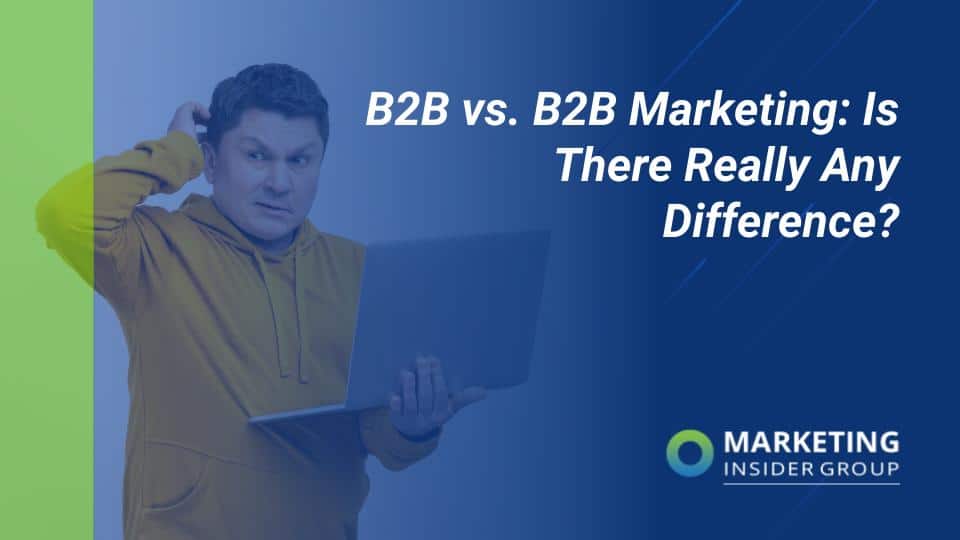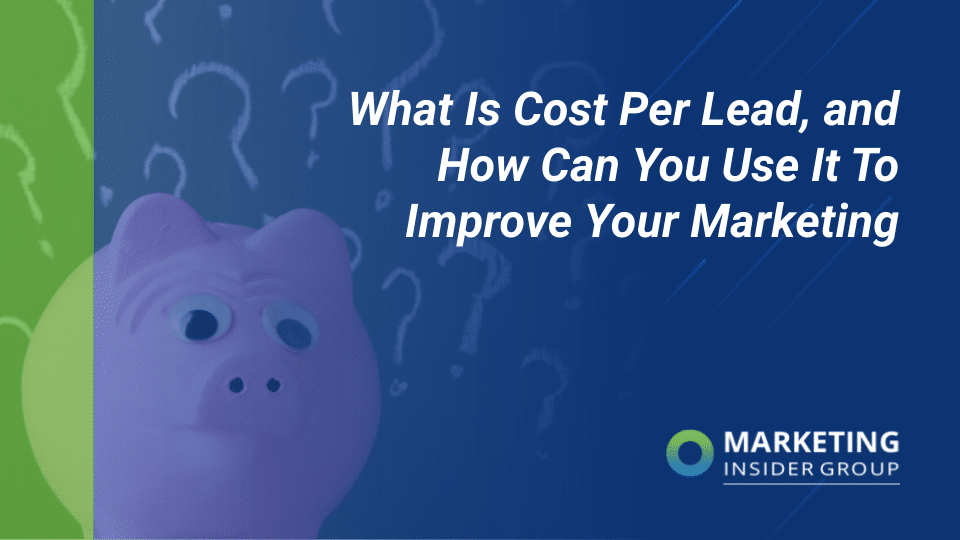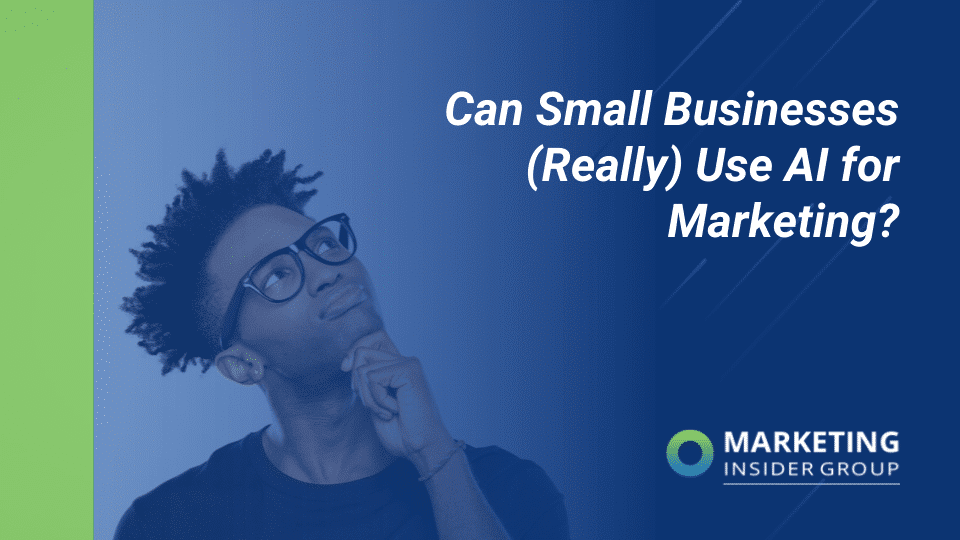
Can Small Businesses (Really) Use AI for Marketing?
Are you tired of spending countless hours manually creating content, following up with leads, and analyzing data for your small business marketing? Have you thought about using AI for small business marketing to make your life a little easier?
You’re not alone. In fact, more than 25% of small businesses are already using AI tools to support their digital marketing and automation efforts.
But before you buy a ticket for the AI train, it’s important to understand both the benefits and limitations of using AI for small business marketing. Because if there’s one thing we know for sure, it’s that AI can’t do it all, and you need skill to navigate the reasoning of robots.
We also know that with the right tools and a bit of human brain power, you can create content efficiently, gain actionable consumer insights, and enhance your business’s performance.
Want to know how it’s done? Here’s the scoop on AI for small business marketing.
Quick Takeaways
- More than 90% of marketers using AI tools say they cut costs and reduced the need to hire for additional marketing roles
- Small businesses should be aware of the pitfalls of using AI in marketing, like lack of human experience and privacy concerns
- AI for small business marketing can help enhance productivity and performance, increase ROI, optimize reporting, improve customer service, and personalize content
- AI tools are best for automating newsletters, creating content, following up with leads, predicting ad performance, improving the customer experience, and analyzing data
Start taking advantage of AI for small business marketing and give your business’s performance and productivity a boost.
Can You Use AI for Small Business Marketing?
More than 80% of small businesses using AI tools agree that they are helping their companies accelerate revenue growth.
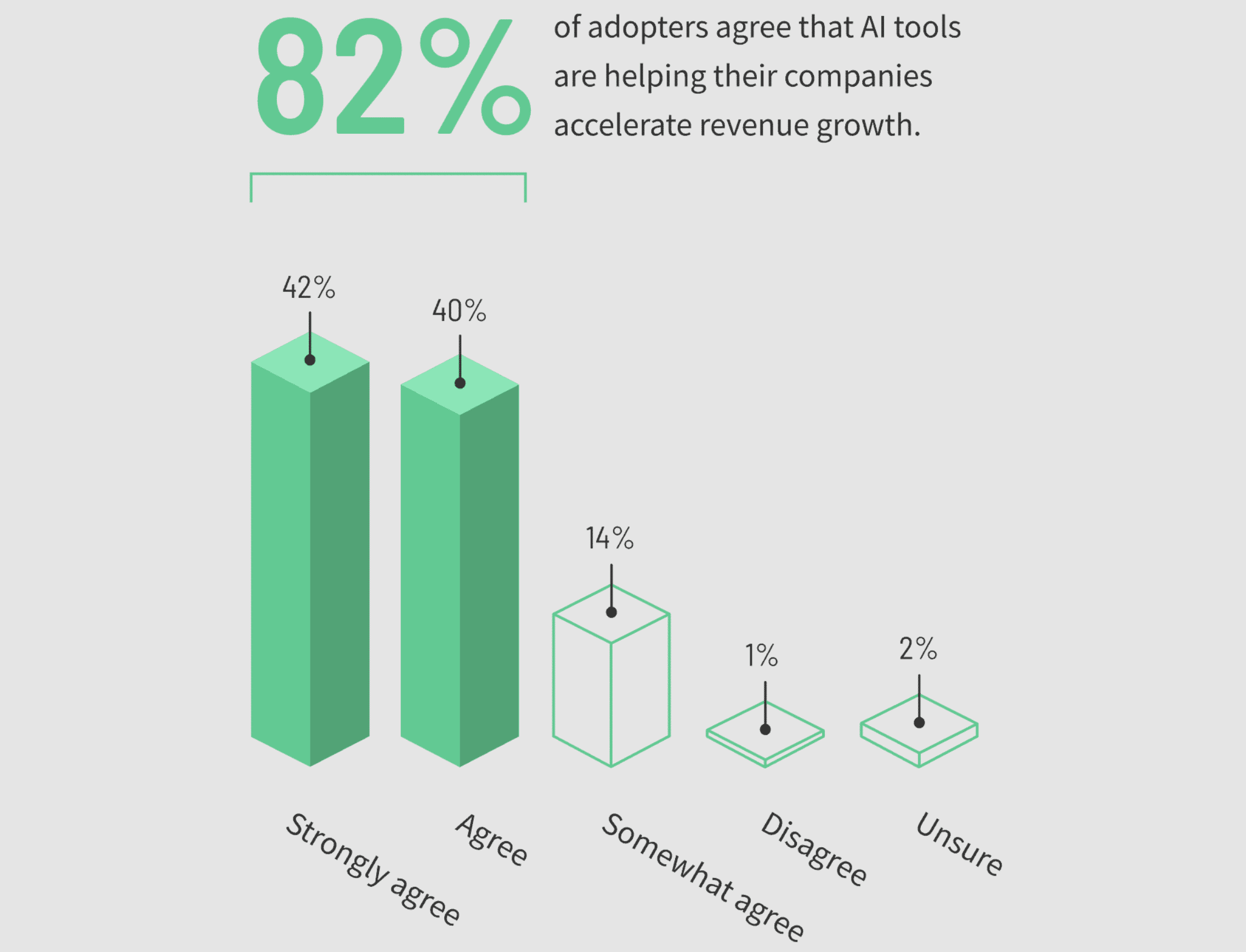
Image Source: Unbounce
Alt-text: bar graph shows that 82% of small businesses using AI tools agree that they are helping their companies accelerate revenue growth
Here at MIG, we’ve been dabbling in AI technology and learning how to use tools, like ChatGPT and Grammarly, to see if they’re worth the hype. We’ve tried it all:
- Creating blog outlines
- Suggesting copy for LinkedIn posts
- Finding inspiration for blog article introductions
- Transcribing video content and webinars
- Writing keyword-focused meta-descriptions
The Verdict
There are definitely pros and cons to asking AI tools for marketing advice.
So yes, you can use AI for small business marketing – to an extent. The key to success is understanding how it can help and how it can hurt your business.
We’ll give you the bad news first: AI isn’t going to run your small business for you. There’s a few things you need to be weary of when it comes to using AI in marketing:
- Lack of human experience. Robots can’t replace humans or their experience, leaving AI-generated content a bit lackluster. Also, many customers prefer to communicate with a human representative rather than a chatbot. These factors can greatly affect the experience your customers have with your brand.
- The learning curve. There is definitely a learning curve for implementing AI-powered solutions into your marketing strategy, but you’re not the only one who has some learning to do. Remember, many AI machines, like ChatGPT, are only trained on knowledge from 2021 and prior. This means having a deep understanding of the AI machines themselves is crucial to receiving accurate, quality responses.
- Privacy and ownership. A lot of concerns about data privacy and security have risen to the surface, especially when customer data is being shared with third-party providers. Not to mention, any AI-generated content is not owned by you or your company, making it even more important to be mindful of how you use AI for small business marketing.
So, although AI can help you with marketing your small business, it’s important to remember to use it as a tool, and not to let AI do the work for you. If you need help creating content or a marketing strategy, it’s best to consult humans before robots.
But just as there are a few pitfalls, there are a lot of areas where AI can help save time and money for your small business.
Why Should You Use AI?
More than 90% of marketers using AI tools say they helped cut costs and reduce the need to hire for additional marketing roles.
But that’s not all. When used correctly, AI tools can also help small businesses:
- Enhance productivity and performance. AI tools can automate repetitive tasks and help businesses free up time to focus on more important areas.
- Increase ROI. AI solutions can reduce costs and maximize resources, ultimately increasing their ROI in the long run.
- Optimize reporting. AI tools can also analyze huge amounts of data through automated reporting applications, making reporting much more efficient.
- Improve customer service. AI can help your small businesses better understand its customers and how they feel about your products and services.
- Personalize content. 71% of marketers say they find AI helpful for personalization, an essential element in today’s marketing content. AI can collect and analyze user data quickly and curate personalized recommendations for your audience.

Image Source: RasaIO
When you weave the right AI tools into your marketing strategy, you can create content efficiently and gain actionable consumer insights, ultimately enhancing your business’s performance and productivity.
6 Ways Small Businesses Can Use AI in Small Business Marketing
Here’s how to take advantage of AI for small business marketing and create a strategy that your audience, Google’s algorithm, and AI machines love.
1. Automate Newsletters
One of the many benefits of using AI for small business marketing is its ability to automate newsletter creation. By sourcing content from different online sources and selecting the most relevant articles to include in your newsletter, AI can save you a lot of time and effort.
AI-powered newsletters can also learn the preferences of each recipient over time, allowing them to deliver a more personalized experience to your audience members. This will likely lead to better engagement and a higher ROI for your email marketing campaigns, without requiring you to manually curate content or segment your audience!
2. Create Content
AI can be a game-changer for small business owners who want to reap the benefits of an effective content marketing strategy.
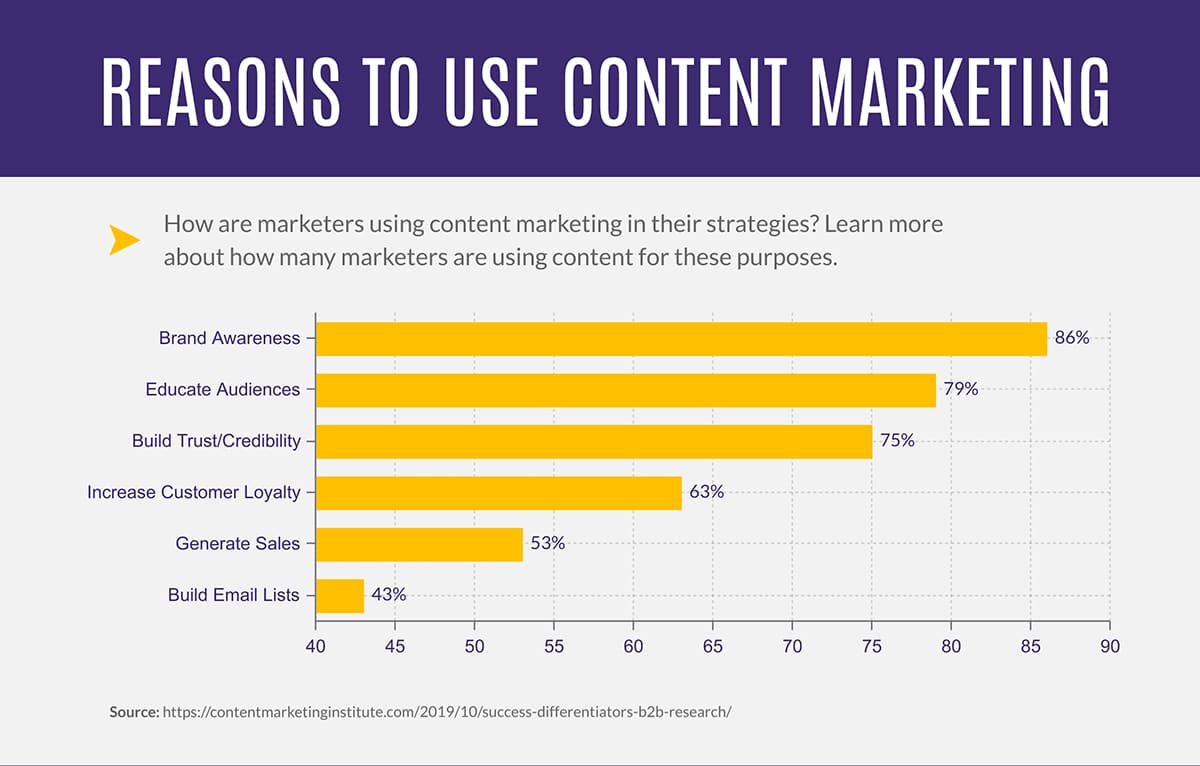
Image Source: Visme
There are now many AI tools available that can help with different parts of the content creation process, like:
- Blog post outlines
- Product descriptions
- Email copy
- Social media posts
Although AI-generated content won’t hold up to Google’s high standards on its own, AI tools can save content creators a lot of time and energy by providing a great starting point.
AI also has the ability to edit and suggest improvements for content that’s already written. This can be especially helpful for making sure the tone and voice of the content are appropriate for the intended audience.
3. Follow Up With Leads
Following up with leads in a timely, effective manner can be a challenge when you have other priorities on your plate. Now, AI tools can do it for you!
By automating lead follow-up through website chat, text, and email, AI tools can ensure that no lead gets left behind, while delivering an authentic, engaging experience for prospects. They will also:
- Answer questions
- Share information on your products and services
- Capture lead information, like contract details
- Nurture and qualify leads over time
Then, as leads become more engaged and show a strong interest in your product or service, the AI bots can then hand them off to human representatives for more personalized, detailed conversations. Not too shabby!
4. Predict Ad Performance
That’s right – AI tools can help predict the performance of your ads before you even run them!
They can also learn which ads and audiences are most effective, and then tell you how to structure your future ads for maximum results. Not only that, but they’ll give you tips on which images and words perform best across different audiences, too.
5. Improve the Customer Experience
AI chatbots are quickly becoming a popular tool for improving the customer experience, a top priority for businesses this year.
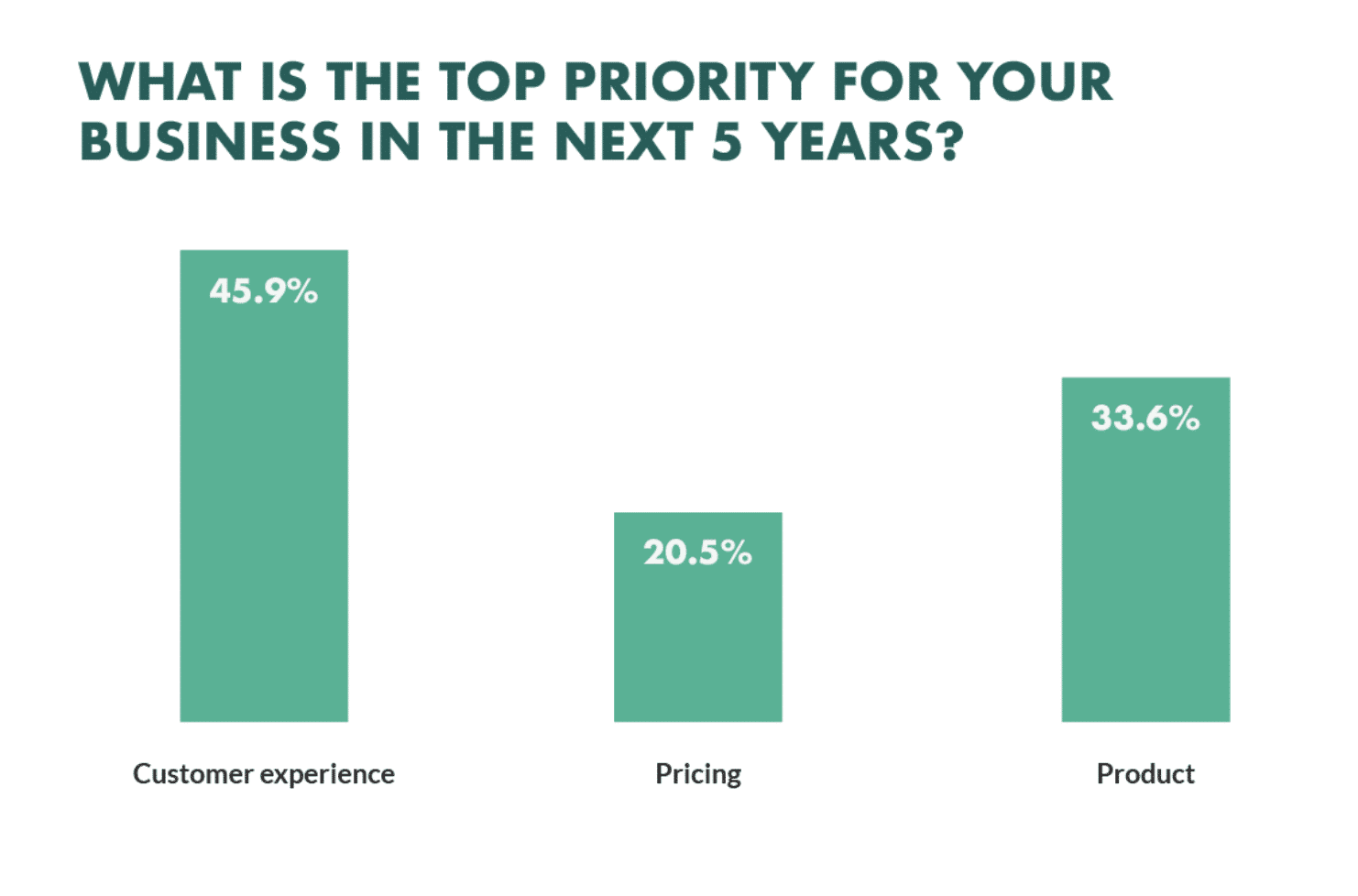
Image Source: SuperOffice CRM
AI have the ability to automatically converse with customers in a way that is natural and intuitive, providing immediate support and assistance.
For small businesses with limited resources, chatbots can make it easier and cheaper to offer immediate service at scale, even if you only have a small team. With a chatbot, you can provide 24/7 support to your customers without having to hire additional staff.
But chatbots aren’t just a cost-saving measure – they can also help to improve customer satisfaction. By providing immediate assistance and personalized support, chatbots can help to build trust and loyalty with customers.
6. Gain Insights From Data
Tired of staring at all that website data and feeling like you’re reading a foreign language? There’s an AI tool for that.
AI tools for data and analytics have the ability to leverage advanced algorithms, analyze information, and extract insights that would be otherwise nearly impossible to uncover. They can also:
- Answer questions about your website’s data, like “Where is my traffic coming from?”
- Identify trends and patterns
- Build complex models that predict future behavior based on demographics
- Identify areas that need improvement
With benefits like these, you’ll not only save time and money, but also optimize your campaigns, increase conversions, and improve customer engagement.
AI Tools For Small Business Marketing
Remember, successful small business marketing takes some (human) brain power, but there are a few tools that can make your job a lot easier!
1. Copy.ai
This AI-powered writing tool is designed to help you create compelling and engaging copy for:
- Emails
- Website pages
- Blog posts
- Social media updates
A tool like Copy.ai is great for finding a starting place for high quality content creation, so you can save time on the brainstorming process.
2. ChatGPT
If you don’t know about ChatGPT yet, it’s time to move out from under your rock. From our own tests and research, we’ve learned that ChatGPT is best used for generating:
- Outlines (for blog posts)
- Basic copy
- Email subject lines
But remember, it’s a good rule of thumb to double check any factual information it spits out. From ChatGPT itself:

Image Source: ChatGPT-3.5
Want to learn how to create effective prompts for ChatGPT that generate quality results? Watch the video below.
Video Source: The AI Advantage
3. Sapling
Sapling is an AI-powered messaging assistant that can help your team respond to customers twice as fast. This tool provides real-time suggestions and creates personalized messages to send to your customers.
Using an AI tool like Sapling can:
- Reduce your response time
- Improve language quality
- Optimize customer communication
With its easy-to-use interface and powerful AI capabilities, Sapling is ideal for small businesses that want to enhance the customer experience with AI.
4. Grammarly
Grammarly is one of the best tools for quality control (and it’s free!). This AI tool for small business marketing will double check your written copy, making sure it’s professional, polished, and ready for the presses.
Not to mention, Grammarly will also check for your tone, clarity, and style to really take your content to the next level. It’s highly accurate, and can be installed as an extension for Google Chrome for your convenience.
5. Omnisend
Onimsend is an all-in-one marketing automation platform, but really shines through its email marketing capabilities. With this platform, you can create and send email campaigns that are target, personalized, and optimized to increase your:
- Open rates
- Click-through rates
- Conversions
- Sales
Omnisend serves as a solid solution for small businesses that want to streamline their efforts, engage customers more effectively, and drive better results across multiple channels.
Ready To Boost Your Small Business Marketing Strategy?
While there are a few pitfalls to be aware of, the benefits of AI for small business marketing are vast. When used correctly, AI tools can help you enhance productivity, increase ROI, and optimize your overall marketing strategy.
Ready to take your marketing strategy to the next level? Start creating high quality content that your audience, SERPs, and AI machines love. Get started today by checking out our weekly blog content service, or schedule a free consultation now to learn more!

